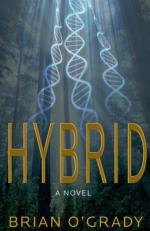|
This section contains 1,193 words (approx. 4 pages at 300 words per page) |

|
Common garden peas (Pisum sativum) are wonderful when eaten raw. Gregor Mendel (1822-1884) no doubt ate his share. Today he is recognized for using peas to establish the science of genetics.
Mendel investigated hereditary patterns of hybrids. Hybrids are off-spring from two organisms that are of different breeds, varieties, or species. Hybrids create new cultivars, from new apple varieties to tangelos to hybrid corn. Some mammals produce hybrids; a mule is the progeny of a horse and a donkey.
Mendel was interested in new flower varieties and absorbed by what hybrids reveal about inheritance. Nineteenth-century scientists wanted to know how organisms created a vast diversity of forms while faithfully maintaining distinct sets of characteristics. Constancy was a known quality of life. Then, as now, people had no trouble recognizing the difference between a housefly and a bee. But what prevented people from suddenly sprouting...
|
This section contains 1,193 words (approx. 4 pages at 300 words per page) |

|


